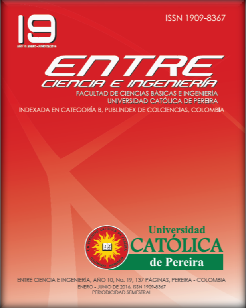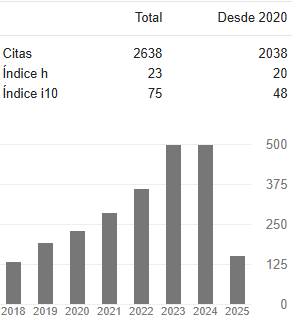Potentiostat prototype with applications in electrochemical processes
DOI:
https://doi.org/10.31908/19098367.476Keywords:
potentiostat, electrode, chronopotentiometry, cyclic voltammetryAbstract
This article presents a low cost prototype potentiostat, which allows to control electrical variables in obtaining coatings by electrodeposition. The QFD (Quality Function Deployment) methodology was used as a planning tool in order to determine the characteristics that should have the potentiostat along the entire process of obtaining the prototype. The development of the research was based on the design and implementation of a prototype potentiostat that can handle three basic functions of electrodeposition. One first function, chronoamperometry lets to keep a constant voltage in the range of 0 V to 20 V and measures the current delivered to the system. A second function, chronopotentiometry maintains constant a current in a range of 0 A to 2 A and measures the voltage (potential). A third function, cyclic voltammetry, works in the same ranges of chronoamperometry (0 V to 20 V) and excites the system by signals as triangular wave, saw tooth, sine, and square, among others. These implemented features were compared to one conventional potentiostat, demonstrating its efficiency in controlling electrochemical processes.
Downloads
References
Skoog, Leary. Análisis Instrumental. Vol I. Ed. Mc Graw Hill. Sexta Edición. 2008.
J. Heyrovsky, “Practical Applications of the Polarographic Method in Chemistry” Enlarged Russian Edition. 1937.
D. Monroy, S. Zabala, “Repotenciación y actualización de un potenciostato galvanostato princeton modelo 363 para el laboratorio de corrosión de la escuela de ingeniería metalúrgica y ciencia de materiales”, Tesis de maestría dirigida por A. Acevedo, D. Peña, Facultad de Ingenierías Físico-Mecánicas, Universidad Industrial de Santander, 16, sep, 2005.
J. Amaya, “Instrumentación electroquímica: Fundamentación teórica para la construcción de prototipos para el laboratorio de corrosión de la escuela de ingeniería metalúrgica”, Tesis de maestría dirigida por J. Barrero, C. Vásquez, Facultad de Ingenierías Físico-Mecánicas, Universidad Industrial de Santander, 29, ene, 2009.
L.-K. Chan and M.-L. Wu, “Quality function deployment: A literature review,” Eur. J. Oper. Res., vol. 143, no. 3, pp. 463–497, Dec. 2002.
D. Gopi, J. Indira, and L. Kavitha, “A comparative study on the direct and pulsed current electrodeposition of hydroxyapatite coatings on surgical grade stainless steel,” Surf. Coatings Technol., vol. 206, no. 11–12, pp. 2859–2869, Feb. 2012.
D. Gopi, S. Ramya, D. Rajeswari, and L. Kavitha, “Corrosion protection performance of porous strontium hydroxyapatite coating on polypyrrole coated 316L stainless steel,” Colloids Surfaces B Biointerfaces, 2013.
D. Gopi, S. Ramya, D. Rajeswari, and L. Kavitha, “Corrosion protection performance of porous strontium hydroxyapatite coating on polypyrrole coated 316L stainless steel,” Colloids Surfaces B Biointerfaces, 2013.
M. Asadi-Eydivand, M. Solati-Hashjin, A. Farzadi, and N. A. A. Osman, “Artificial neural network approach to estimate the composition of chemically synthesized biphasic calcium phosphate powders,” Ceram. Int., vol. 40, no. 8, pp. 12439–12448, Sep. 2014.
X. Zhang, F. Geng, X. Huang, and M. Ma, “Acceleration of the initial phase transformation of mineralization by phosvitin,” J. Cryst. Growth, vol. 409, pp. 44–50, Jan. 2015.
Downloads
Published
Issue
Section
License
Copyright (c) 2019 Entre ciencia e ingeniería

This work is licensed under a Creative Commons Attribution-NonCommercial 4.0 International License.



















